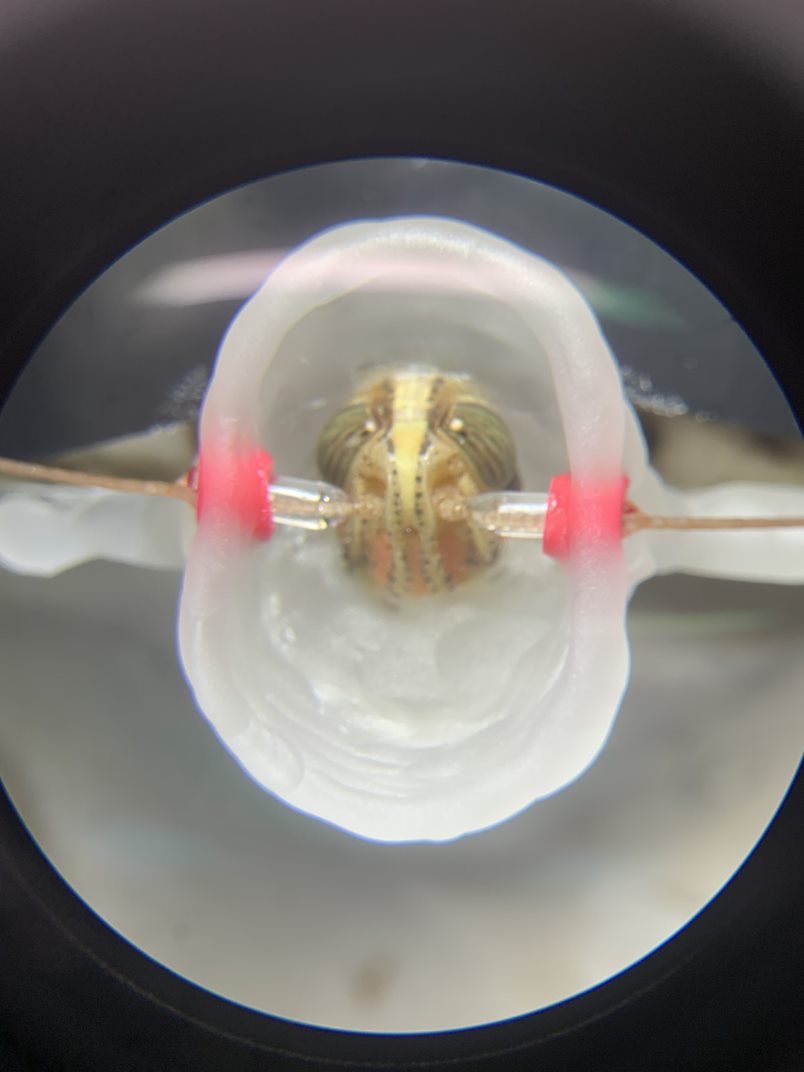[ad_1]
In all circumstances, the animals are imagined to be sensing chemical compounds that persons emit via body odor or breath. The mix of chemical substances can vary depending on a person’s metabolic rate, which is believed to improve when we get unwell. But pet dogs are high-priced to train and seem after. And producing a system that mimics a dog’s nose has proved really challenging to do, suggests Debajit Saha, one of the researchers powering the most up-to-date function, which has not still been peer-reviewed.
“These alterations are pretty much in components for every trillion,” says Saha, a neural engineer at Michigan State College. This will make them tricky to select up even with point out-of-the-artwork systems, he provides. But animals have developed to interpret such refined adjustments in scents. So he and his colleagues resolved to “hijack” an animal brain rather.

COURTESY OF THE Researchers
The researchers selected to get the job done with locusts since these insects have been properly analyzed in the latest many years. In a preliminary set up, they surgically exposed the brain of a dwelling locust. Saha and his colleagues then inserted electrodes into lobes of the mind that get indicators from the insects’ antennae, which they use to sense odors.
The staff also grew 3 distinctive varieties of human oral cancer cells, as very well as human mouth cells that were being most cancers-cost-free. They utilised a system to capture fuel emitted by every of the mobile forms, and delivered every single of these to the locusts’ antennae.
The locusts’ brains responded to just about every of the cell types in another way. The designs of electrical action recorded ended up so distinctive that when the workforce puffed the gas from one particular cell kind onto the antennae, they could effectively establish whether the cells were cancerous from the recording by yourself.
It is the 1st time a residing insect mind has been analyzed as a instrument to detect cancer, says Saha.
Natalie Plank, who is developing nanomaterial-based mostly wellbeing sensors at Victoria College of Wellington in New Zealand, thinks the get the job done is “super neat.” “The probable of just becoming able to breathe on a thing and then know if you’re at chance for cancer … is truly potent,” she claims.
In the experiment, the workforce took mind recordings from numerous locusts and merged their responses. It at this time usually takes recordings from 40 neurons to get a crystal clear sign, which signifies the technique demands amongst 6 and 10 locust brains. But Saha hopes to use electrodes that can file from much more neurons, which would let him to get recordings from the mind of a solitary locust. He also hopes to be equipped to use the mind and antennae in a transportable system, which could then be analyzed on authentic folks.
[ad_2]
Source url










More Stories
Don’t Use an Apple AirTag as a Pet Tracker – Use a Whistle Instead!
A growing number of Samsung owners are using the same terrible password
Amazon begins layoffs of up to 10,000 jobs, blames “uncertain” economy